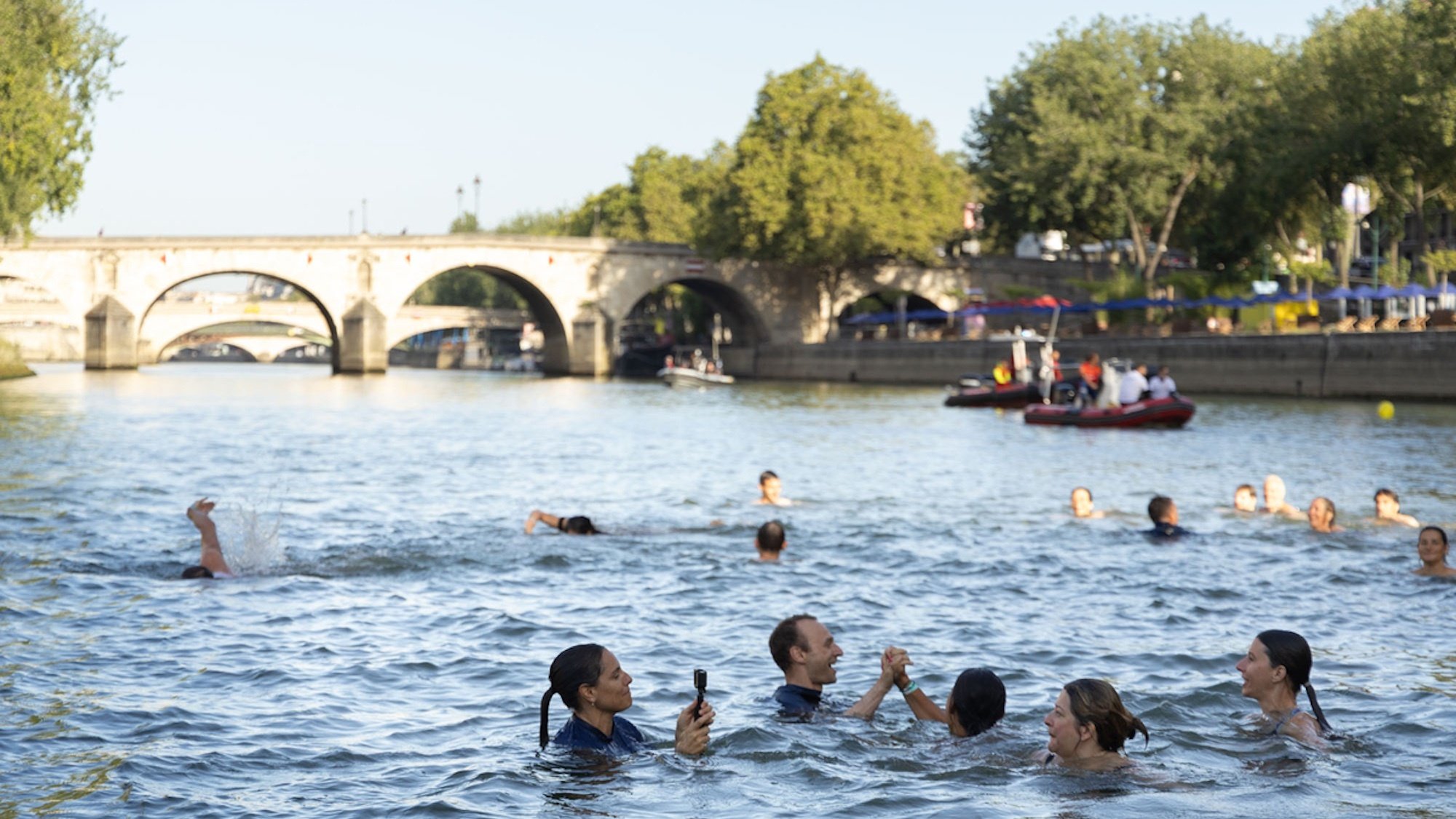1. Water samples analyzed daily
Long described for its concentration of bacteria, the water of the Seine remains a barrier for swimmers tempted to take a dip in the river. But don’t worry! To ensure a risk-free swim in the three designated areas (a reminder: Bras-Marie, Grenelle, and Bercy), the City of Paris will monitor daily the quality of the water based on the recommendations from the regional health agency (ARS). Microbiological analyses will be conducted every day in the lab from samples taken at the sites and at the entrance of Paris.
Particularly scrutinized will be two main indicators: the concentration of Escherichia coli and enterococci, as their presence can signal...to be a contamination. At the same time, models will help to anticipate the impact of rainfall events on water cleanliness, with the testing of a new device to boost responsiveness: ColiMinder, a quick alert system, useful for preventing upstream pollution.
Lihat postingan ini di Instagram
2. Exceptional closures in case of poor results
But then, could we be denied access to the river if the results are not satisfactory? The answer is yes! The opening or closing of swimming sites will be decided daily by the City of Paris, which will rely on a precise decision-making flowchart and a platform centralizing all the collected data. These decisions, indicated on-site by a green flag or red flag (visible online), are based on several sources: the field observations carried out by teams on the banks, hydroclimatic data (rain, river flow, weather), the real-time readings from ColiMinder sensors, as well as the results of bacteriological analyses produced by Eau de Paris or the ARS.
As a precaution .A site may even close for 24 to 36 hours, specifies the City, in the event of heavy rain or an alert being exceeded, even if the water still meets regulatory thresholds. In the case of confirmed pollution, swimming will only reopen after obtaining a new compliant result, which requires a minimum delay of 24 hours before reopening.
Voir cette publication sur Instagram
3. 27 lifeguards deployed
To ensure safe swimming, you can rely on the presence of 27 lifeguards, spread across the three authorized sites. Present every day throughout the summer season, they will ensure supervision of swimming areas, welcome the public, and provide first aid if needed. The City of Paris assures you: all of them are certified in BNSSA (National Certificate in Aquatic Safety and Rescue) and trained in the specifics of the Parisian system.
If their presence guarantees a constant vigilance on the quays, with organized rotations to cover all opening hours, they are also mobilized to assess the comfort level of each new swimmer in the waters of the Seine. At the foot of the Bercy park, just a stone's throw from the Marie bridge or along the Grenelle arm, every half...
Swimming in the water will begin with a visual test. "They are going to check if people are able to be safe in the water," explains Lazreg Benelhadj, first vice-president of the Lifesaving Federation, to our colleagues from Parisien. After this evaluation, the lifeguard can authorize swimming, forbid it, or offer a floating aid, like a buoy. A bracelet will be given to swimmers judged fit, sparing them from having to retake the test during their next visits. It's a way to remind everyone that they are swimming in a river, not in a pool.Voir cette publication sur Instagram
4. Age and Height Restrictions Based on Locations
Some access restrictions will also be set based on the specific conditions of the river. Age and height of swimmers will be considered, especially in areas where the current is stronger. This is the case at the Marie Bridge and in the Grenelle branch, where only adolescents aged 14 and older, who are at least 1.40m tall, will be allowed to swim. However, it will only take being 10 years old and 1.20m tall to dive at the foot of the Bercy Park. These essential safety measures are in place to prevent any risks related to the strength of the current, which might stop you from splashing around with your little nephews or children, but we promise it's for a good reason.
Du 5 juillet au 31 août, face à l'Île aux Cygnes, profitez de la nouvelle baignade dans le "bras de Grenelle" : bassin sécurisé pour enfants, base nautique pour le kayak, vestiaires, douches et sanitaires. Un lieu idéal pour se rafraîchir et se détendre en plein cœur de #Paris15 pic.twitter.com/JDxj2XfZQ9
— Mairie du 15 (@mairie15) June 24, 2025
5. Boats ready to rescue swimmers out of bounds
Finally, to keep an eye on those cheeky folks who might think that the swimming permit has gone to their heads, a rescue boat will be on standby to intervene in case of a violation of the authorized area. “Ten lifeguards have obtained their river navigation license,” specifies Lazreg Benelhadj. In addition to their diploma, they all hold a certificate for intervention in natural environments, allowing them to effectively curb any unauthorized dives. So, we recommend you stay on your toes, or risk getting a rather patronizing scolding!
Voir cette publication sur Instagram
